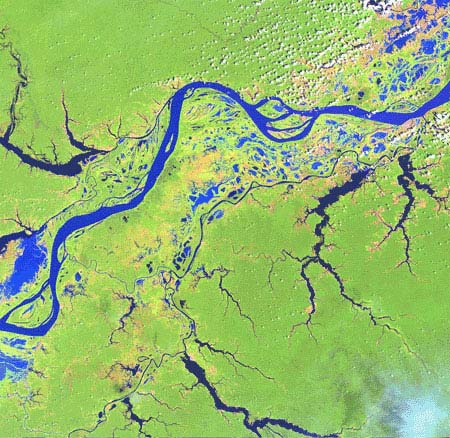Climate Change Threatens World's Wonders

BRUSSELS, Belgium (AP)—An environmental group said Thursday some of the world's greatest natural treasures are threatened with destruction because of global warming—from the Great Barrier Reef to the Amazon rain forests and the unique ecosystem of the Mexican desert.
- Also Today: International Group Issues Global Warming Report
On the sidelines of a climate change conference in Brussels, the World Wide Fund for Nature issued a list of 10 regions suffering serious damage from global warming, and where it has projects to limit further damage or help people adapt to new conditions.
"What we are talking about are the faces of the impacts of climate change,'' said Lara Hansen, WWF's chief scientist on climate issues.
The group said coral reefs around the world, including the Great Barrier Reef in Australia and the MesoAmerican Reef off Belize, begin to lose their color and die with a rise in ocean waters of just 1.8 degrees Fahrenheit. They are also threatened by the increasing ferocity of tropical storms, another effect of global warming.
Environmentalists project the temperature of the Amazon River could rise by 3.6 to 5.4 degrees Fahrenheit within 50 years, turning between up to 60 percent of the rain forest into a dry savanna.
In the Bering Sea, warmer winters are leading to the earlier breakup of spring ice and driving salmon stocks closer to the North Pole, disrupting the Arctic ecosystem. Melting ice is also diluting sea water and affecting nutrients for small organisms on which fish feed.
In the Valdivian rain forest in Chile and Argentina, the Alerce tree—which can live for 3,000 years—is threatened by forest fires and declining rainfall. Melting glaciers mean groundwater in the region will also become more scarce.
Get the world’s most fascinating discoveries delivered straight to your inbox.
The Chihuahua Desert straddling the U.S.-Mexican border is suffering from drought and intensive farming and overgrazing. North America's largest desert, the Chihuahua has 3,500 unique plant species, including an array of cactus and yucca, that could be at risk.
Many of the regions at risk were singled out in a report by the Intergovernmental Panel on Climate Change, an authoritative body of 2,500 scientists. The report, which is undergoing governmental review at the five-day conference in Brussels, projects specific consequences for each degree of rising global temperatures, which the IPCC agrees is largely caused by human activity.
Some damage at the 10 areas listed by WWF is irreversible, such as shrinking glaciers, Hansen said. Certain types of coral reefs, however, can recover.
The WWF listing also said:
- Six of seven species of Caribbean turtles are endangered as rising sea levels swamp nesting beaches and feeding grounds.
- Some Himalayan glaciers are receding by 33 to 49 feet per year, causing floods now and threatening summer drought in the future.
- Glaciers in the Tibetan plateau that feed China's Yangtze river are also shrinking, adding to water flows now but threatening shortages of water, food and electricity to 450 million people as they reach a critical point.
- The Bay of Bengal is rising and increasingly violent rainstorms in India could inundate coastal islands, destroy mangrove forests and affect India's Sunderbans, home to the largest wild population of Bengal tigers and to 1 million people.
- Scientists predict East African coastal forests and the offshore ecosystem will also be vulnerable to more frequent and intense storms that will damage agriculture, shoreline mangroves and coral reefs.
More to Explore
- 10 Surprising Results of Global Warming
- Emerging Environmental Technologies
- Video: Goldilocks and the Greenhouse
- How You Can Fight Global Warming
Global Warming Features
- Earth Will Survive Global Warming, But Will We?
- Strange Weather's Loose Link to Global Warming
- Global Warming or Just Hot Air? A Dozen Different Views
Recent Climate Change News
- Supreme Court Rebukes Bush on Carbon Dioxide Policy
- EU Presses United States on Global Warming
- Report Details Global Biological Change
- Charge: Carbon Dioxide Hogs Global Warming Stage
- Sun Blamed for Warming of Earth and Other Worlds


